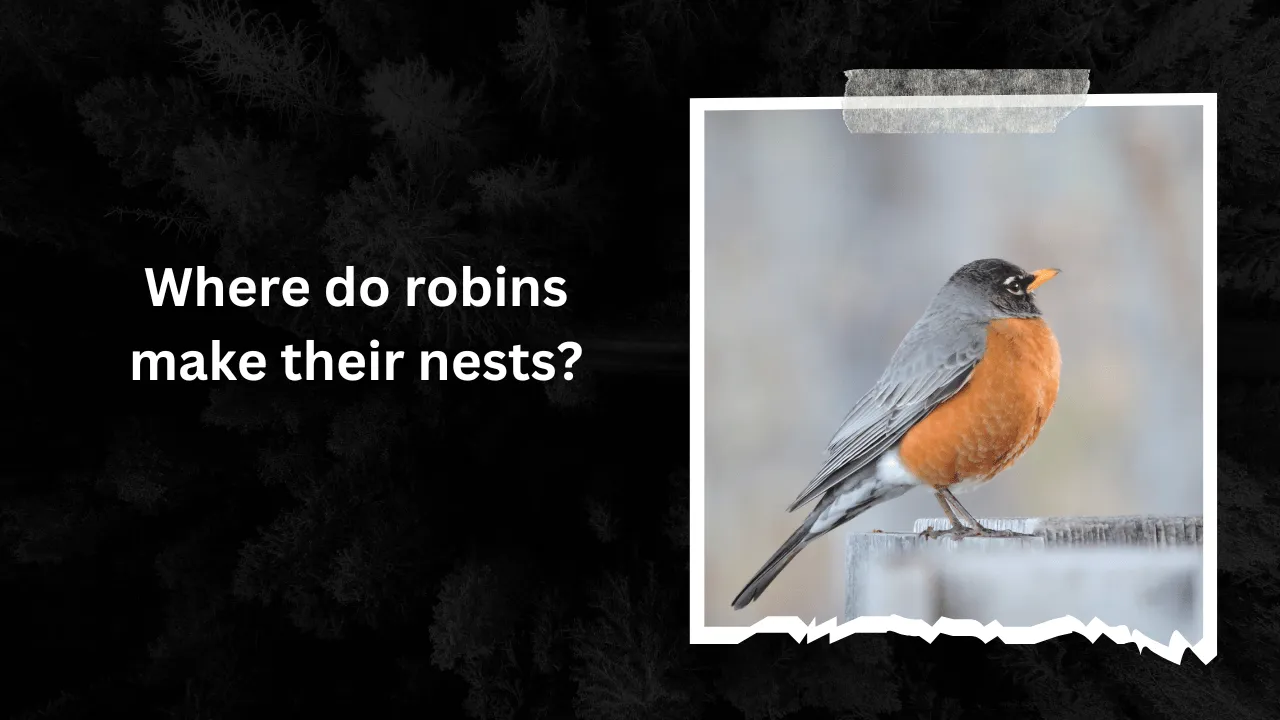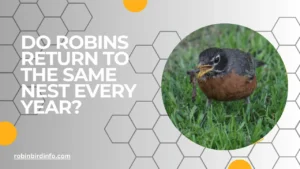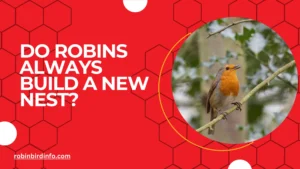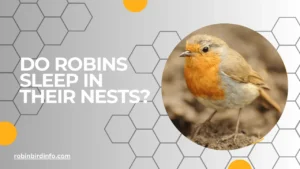We all know the cheerful chirp of a Robin, a harbinger of spring and a familiar sight flitting across our lawns.
But have you ever stopped to wonder where these busy birds spend their nights, or more importantly, where they raise their families? Their nests, those intricate cups woven from twigs and leaves, are a marvel of avian architecture. But where exactly do Robins choose to build these hidden havens?
Finding a suitable nest site is crucial for a Robin’s breeding success.
It’s not just about aesthetics; the location needs to offer protection from the elements, predators, and even curious human eyes! This blog post delves into the fascinating world of Robin nesting.
We’ll explore the surprising variety of places these birds choose to build their homes, the reasoning behind their site selection, and how their nesting behavior can be influenced by both natural and human factors. So, grab a cup of coffee and get ready to peek into the secret lives of Robins – you might be surprised by where they choose to raise their young!
Contents
- 1 Nest Site Selection
- 2 Nest Construction Materials
- 3 Territorial Behavior and Nest Defense
- 4 Impact of Human Interference
- 5 The Role of Nest Site Fidelity
- 6 Conclusion
- 7 FAQ’s
- 7.0.1 Why do Robins build their nests in such exposed places?
- 7.0.2 How long does it take to build a Robin’s nest?
- 7.0.3 What materials do Robins use to build their nests?
- 7.0.4 Can I reuse an old Robin’s nest?
- 7.0.5 How can I attract Robins to my yard?
- 7.0.6 How can I protect Robin nests from predators?
Nest Site Selection
Robins are meticulous nest builders, carefully selecting ideal nesting sites. They often choose sheltered locations, such as dense shrubs, trees, and man-made structures. Food availability and water sources are also important factors in nest site selection.
To construct their nests, Robins gather materials like twigs, grass, and mud. They weave these materials together to form a sturdy, cup-shaped nest.
Nest Construction Materials
The materials used in nest construction can vary depending on what is available in the environment. However, Robins typically use a combination of twigs, grass, and mud. They may also incorporate other materials, such as pine needles or animal hair, to add warmth and insulation to the nest.
The basic structure of a Robin’s nest is a cup-shaped cavity. The nest is often lined with soft materials, such as moss, feathers, or hair, to provide a comfortable and warm environment for the eggs and young.
The size and weight of a Robin’s nest can vary depending on the materials used and the specific location of the nest. However, most Robin nests are relatively small and lightweight.
Territorial Behavior and Nest Defense
Robins are highly territorial birds, especially during the breeding season. They defend their nesting territories aggressively, using a combination of vocalizations and physical displays.
Both male and female Robins play a role in protecting the nest from predators. They may dive-bomb intruders, emit alarm calls, or engage in physical confrontations.
Impact of Human Interference
Human activities can have a significant impact on Robin nesting behavior. Disturbance from humans, such as pruning trees or cleaning nesting sites, can stress the birds and may lead to nest abandonment.
Nest boxes can provide artificial nesting sites for Robins, especially in areas where natural nesting sites are limited. However, it is important to place nest boxes in suitable locations and maintain them properly.
Habitat loss and fragmentation are major threats to Robin populations. The loss of forests and woodlands can reduce the availability of suitable nesting and foraging sites.
The Role of Nest Site Fidelity
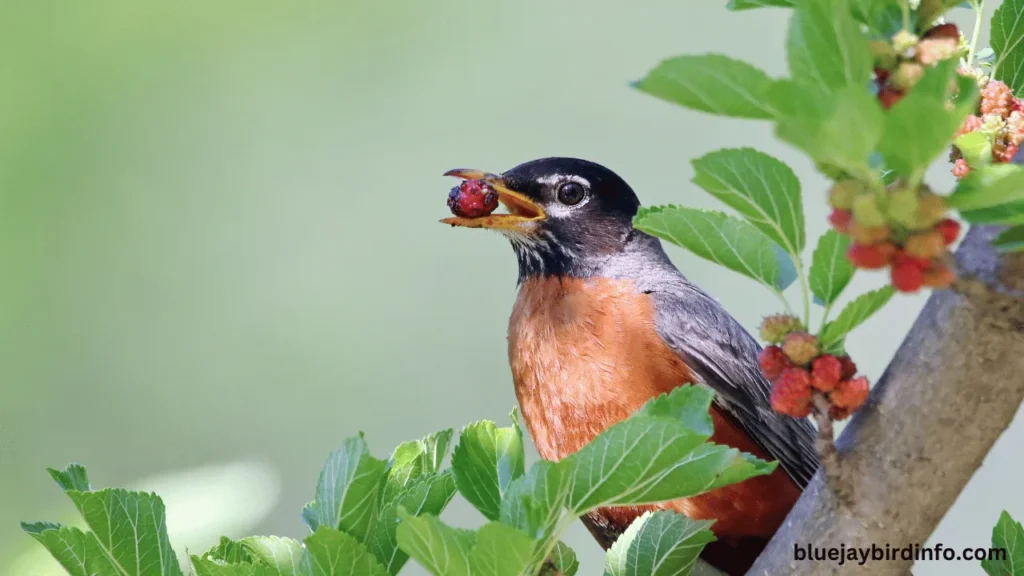
While Robins typically do not reuse old nests, they may exhibit site fidelity, returning to the same general area to breed year after year. This behavior can be influenced by factors such as habitat quality, food availability, and social factors.
Returning to a familiar territory can provide several benefits, including reduced energy expenditure on nest site selection and increased familiarity with the local environment. However, if the habitat quality declines or the territory is no longer suitable, Robins may seek out new breeding sites.
Conclusion
Understanding the factors that influence Robin nest site selection and reuse is essential for appreciating the complexity of bird behavior. By respecting their territories and minimizing human disturbance, we can coexist peacefully with these fascinating birds.
It’s important to remember that while Robins may exhibit aggressive behavior, they are also gentle creatures that play a vital role in our ecosystems. By protecting their habitats and promoting conservation efforts, we can ensure the survival of these beloved birds.
FAQ’s
Why do Robins build their nests in such exposed places?
While it may seem risky, Robins often choose exposed nest sites to maximize sunlight and visibility. This helps them monitor for predators and regulate the temperature inside the nest.
How long does it take to build a Robin’s nest?
The time it takes to build a Robin’s nest can vary, but it typically takes several days. The female Robin does most of the nest-building work, while the male may help gather materials.
What materials do Robins use to build their nests?
Robins use a variety of materials to build their nests, including twigs, grass, leaves, and mud. They often line the nest with softer materials, such as feathers or hair, to provide insulation and comfort for their eggs and young.
Can I reuse an old Robin’s nest?
It’s not recommended to reuse an old Robin’s nest. While it may seem like a good idea to provide a ready-made home for birds, old nests can harbor parasites and diseases that could harm the next generation of birds.
How can I attract Robins to my yard?
To attract Robins to your yard, you can provide a variety of food sources, such as birdseed, mealworms, and fresh fruit. You can also create a bird-friendly environment by planting native plants, offering clean water sources, and providing nesting sites.
How can I protect Robin nests from predators?
To protect Robin nests from predators, you can install physical barriers, such as bird netting or cages. Additionally, you can deter predators by using scare tactics, like reflective tape or scarecrows.

